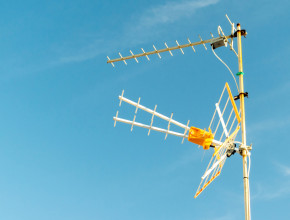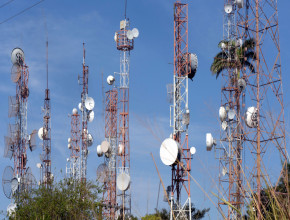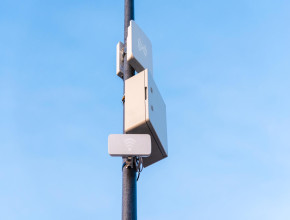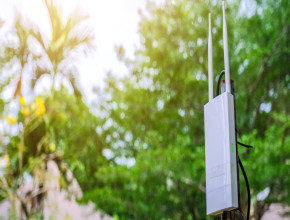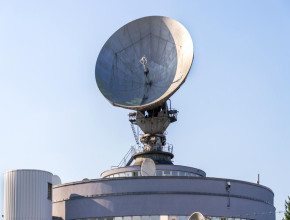
The antenna helps to convert electric current into electromagnetic waves and vice versa. It is an important component in modern communication and helps to simplify long-distance communication. Let us further discuss the antenna, its types, reasons to use the antenna, and other things.
What is Antenna?
Before discussing the types of antennas and their uses, let us discuss the meaning of antenna. An Antenna is a kind of device that transmits and receives light waves or radio waves as per the application.
Different types of antennas are used for different types of communication. They are developed for the various kinds of applications. Antennas can be small or large and can have simple to complex designs.
Why Use Antenna?
An antenna can be used to transmit or receive antennas in an application. Using antennas will solve the problem of poor communication in remote areas. They will transmit the signals even to the farthest distances in remote places. One can also use multiple antennas to use the different receivers at one time. Let us discuss the different benefits of using an antenna in wireless communication:
- You will gain strong signals in the communication by using a Wireless Antenna.
- It offers a high directivity in the field of communication.
- Antennas give better performance while communicating to a larger distance.
- It gives a higher gain in the communication.
- Power wastage is decreased by using a good antenna in the different applications.
- The problem of minor lobes is reduced to a large extent after using an antenna
- You will get a high signal-to-noise ratio after using an antenna.
Types of Antenna
Now, let us discuss the different types of antennas in this section. The different types of antennas are:
-
Directional Antenna
A Directional Antenna is a kind of antenna that helps to radiate or receive greater radio waves in a particular direction. It transmits and receives signals in a narrow beam in a single direction. This antenna has a shape like a lobe and comes in various shapes, designs, and sizes that change according to the purpose.
Some of the most common directional antennas include dish antennas, grid antennas, panel antennas, and Yagi antennas. All these antennas have different applications that depend on a particular setup.
Sector antennas cover a pie-shaped area or a circle. The width of the sector it covers ranges between 60 degrees and 180 degrees. Moreover, directional antennas are widely used in wireless internet devices and similar applications.
-
Omni-Directional Antenna
An Omnidirectional Antenna is a kind of antenna that radiates equal radio power in all directions perpendicular to an axis. These antennas are normally used for nondirectional antennas on the earth’s surface as they radiate signals equally in every horizontal direction. Power radiated drops off with an elevation angle so little radio energy is aimed to the sky or down to the earth and wasted.
Omnidirectional antennas are mostly used in walkie-talkies, FM radios, cell phones, wireless computer networks, and GPS. They are also used in taxi dispatchers as well as aircraft communications.
Properties of An Antenna
The next section explains the various properties of an antenna such as:
-
Bandwidth
Bandwidth is the range of different frequencies in a device on which it works. It is represented in Hz for which the SWR is lower than 2:1.
-
Gain
Gain is defined as the intensity by which the waves are transmitted by an antenna. Designing the gain is done in a way that radiates maximum power in a particular direction.
-
Effective Length
Effective length is measured for both transmitter and receiver. The free space length is a conductor is known as the effective length.
-
Polarization
-
Polarization in an antenna is the polarization of the fields that the device transmits. It is one of the most important concepts in the case of device-to-device communication. Waves launched by the device are polarized differently. EM vector is horizontal and horizontal devices are necessary to receive waves.
How Does An Antenna Work?
Antennas transmit and collect electromagnetic radiation. Electrical signals are collected from the transmission line and converted into radio signals. This is the same process on the receiving end in reverse order. It will accept the radio waves and then convert them into an electrical signal.
Moving charges will generate electromagnetic waves. With the oscillation of the charge, the electric field will vary as well. This changing electric field will generate displacement current. Maxwell’s equations are used in the working of every device. The magnetic field is generated with the generation of the electric field. Ampere’s law is used for calculating the electric and magnetic field generation.
The energy that enters is then converted into Electromagnetic waves. The signal’s current will radiate these waves.
Other Types of Antennas
Antennas are of many different kinds such as:
-
Yagi Antenna
Yagi antenna is an antenna that uses passive elements and can be constructed by using multiple reflectors.
-
Helix Antenna
The second type of antenna is a helix antenna. A helical structure is formed with the help of multiple wires which are excited by external feed. This structure gives 2 radiation modes which are normal and axial modes.
-
Dipole Antenna
A Dipole antenna is a kind of antenna in which the length is shorter than the wavelength of the signal. In dipole antennas, the length of the wire is half the wavelength and is also known as a half-wave dipole.
-
Ship Antenna
As the name suggests, the ship antenna is used in various types of ships and vessels. These antennas normally include an automatic tracking system for the comfort of ship movement.
Final words
These are the different kinds of antennas and how they work in the device. An antenna is a necessary component in the working of any device. Antennas are developed by using different tasks and have different pros and cons.
Antenna makes communication much easier and better in any device. You can get many antenna manufacturers online to buy the different kinds of antennas for different devices.

